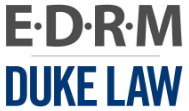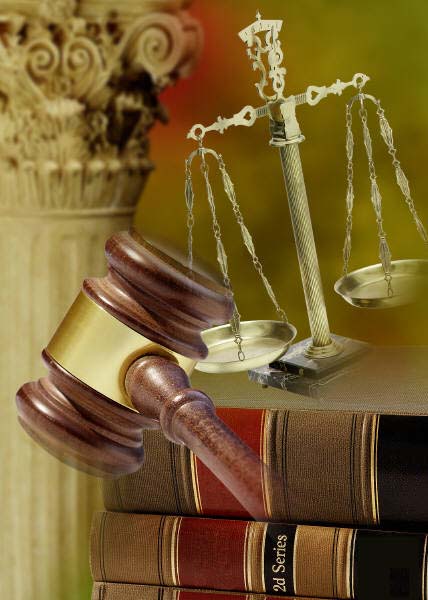This is the fourth of the 2017 Legaltech New York (LTNY) Thought Leader Interview series. eDiscovery Daily interviewed several thought leaders at LTNY (aka Legalweek) this year to get their observations regarding trends at the show and generally within the eDiscovery industry.
Today’s thought leader is George Socha of BDO. Co-founder of EDRM, George is a Managing Director in BDO Consulting’s Forensic Technology Services practice. Named an “E-Discovery Trailblazer” by The American Lawyer, he assists corporate, law firm, and government clients with all facets of electronic discovery, including information governance, domestically and globally. Prior to joining BDO, George spent 16 years as a litigation attorney in private practice before starting his own consulting firm focused on e-discovery issues in 2003. He received his law degree from Cornell Law School and his undergraduate degree from the University of Wisconsin-Madison.
What are your observations about LTNY this year and how it compared to other LTNY shows that you have attended?
ALM made several changes this year: Legalweek, not just Legaltech, and an entry fee for the exhibit hall. I gather traffic in the exhibit hall was down from last year; maybe that meant fewer people just showing up for free stuff or perhaps there were fewer serious shoppers as well. From what I heard, sessions generally were well attended. If ALM was hoping for a re-energized Legaltech, I don’t think they got there.
Some years, Legaltech is abuzz with the newest catchphrase, such as “early case assessment” or “predictive coding.” No pithy phrase left to the fore this year. There was, however, a recurring theme. Growing concerns over cybersecurity seemed drive a level of interest in and lend a degree of urgency to information governance in a way we have not seen in the past. A major problem, folks seemed to say, was the security of data. A way to help address that problem, better governance of the data. Part of the means for achieving better governance, turning to eDiscovery tools and techniques.
This past year was an important year for EDRM with the acquisition of EDRM by the Duke University School of Law. What was the driving force behind the decision for EDRM to be acquired by Duke and how do you think it will impact where EDRM goes from here?
For several years, Tom Gelbmann and I had been looking for a new home for EDRM. Tom was ready to retire. I did not want to run EDRM on my own. And in any event, it was time and past to find an established institution that could provide for a more solid future than any one, two or three individuals could do.
Last year, we were put in touch with the folks at Duke. From the first discussion it looked like a good match, and I am pleased to be able to say that the first months have gone well. Tom is now fully retired and Duke is now been taking over the operation of EDRM. While Tom may be fully retired, I continue to be very actively involved in EDRM and will be for the foreseeable future.
Duke will hold an EDRM workshop this spring, as we have in the past. The focus of that workshop will be on 1) developing Technology Assisted Review (TAR) standards, both for the bench and the bar, 2) beginning development of standards for data analytics across all phases of the EDRM diagram, and 3) working on General Data Protection Regulation (GDPR) issues, particularly development of the US code of conduct. Most likely, there will be a couple more activities as well. The conference will be at Duke (May 15 through 17) and it will follow much the same format as we have used in the past.
Duke can bring to bear a depth and breadth of resources Tom and I never could match, opening up opportunities that we lacked the bandwidth to pursue. For example, this fall Duke will convene a conference in September, at the Duke Law School, focusing on the TAR standards under development. In addition, Duke just launched a rebuilt EDRM website, with a new look and better navigation.
One recent trend we’ve seen is with regard to an emphasis on technology competence for attorneys and we’re up to 26 states that have adopted some sort of technology competence requirement, with Florida being the first state that has required technology CLE for their attorneys. Do you think the increased emphasis on technology competence will change the general lack of understanding of technology within the legal profession?
I would so much like to be able to say “yes, I think those efforts will accomplish those goals”. However, I’m not so certain how successful they really will be. CLE requirements are met by attendance, not by demonstrating competence. Simply to mandate attendance at a CLE by itself is not sufficient to ensure increased competence.
It also is not clear, to me at least, that there is any consensus as to what constitutes technological competence. Are we talking about the ability for a lawyer to write a document himself or herself using a word processing program? Or are we talking about an ability for a lawyer to handle the technological components of certain parts of the eDiscovery process? Are we saying that lawyers ought to be able to make forensically sound copies of the contents of a hard drive? Are we saying that they are to understand at some level what it means to make forensically sound copies of a hard drive? Or are we talking about some other level of technological competence?
Another recent trend we’ve seen is a move toward SaaS automation, with not only certain providers making a splash by offering SaaS automation technology, but also “big boys” in the industry (such as kCura and Ipro) moving toward offering their own SaaS automation solutions. What do you think the move toward automation will mean for the eDiscovery space?
“Automation” means many different things, depending upon which portion of the eDiscovery and larger legal technology space you focus on. SaaS automation is only a piece. For some time now, providers have been automating portions of the eDiscovery process, such as relying on automated steps to facility loading data into a platform, for example, or using TAR to improve the review workflow. We only will see more of this.
We are beginning to see more effective use of data analytics at all stages of the EDRM diagram, from information governance through presentation. Similarly, I think we are going to see more and more effective use of artificial intelligence across the full spectrum. You can take that same concept and expand it out further. It’s not only for eDiscovery, but for all facets of the practice of law. There are a growing number of people and organizations that are trying to figure out how technology can enhance what lawyers and their support staff are capable of doing.
In addition to what we’ve discussed about EDRM, what are you working on that you’d like our readers to know about?
Perhaps not surprisingly a significant part of my focus these days is the use of data analytics across all phases of the EDRM model as well as in related areas, such as information governance and cybersecurity. It is not man versus machine; it is people and technology working together.
Thanks, George, for participating in the interview!
And to the readers, as always, please share any comments you might have or if you’d like to know more about a particular topic!
Disclaimer: The views represented herein are exclusively the views of the author, and do not necessarily represent the views held by CloudNine. eDiscovery Daily is made available by CloudNine solely for educational purposes to provide general information about general eDiscovery principles and not to provide specific legal advice applicable to any particular circumstance. eDiscovery Daily should not be used as a substitute for competent legal advice from a lawyer you have retained and who has agreed to represent you.








